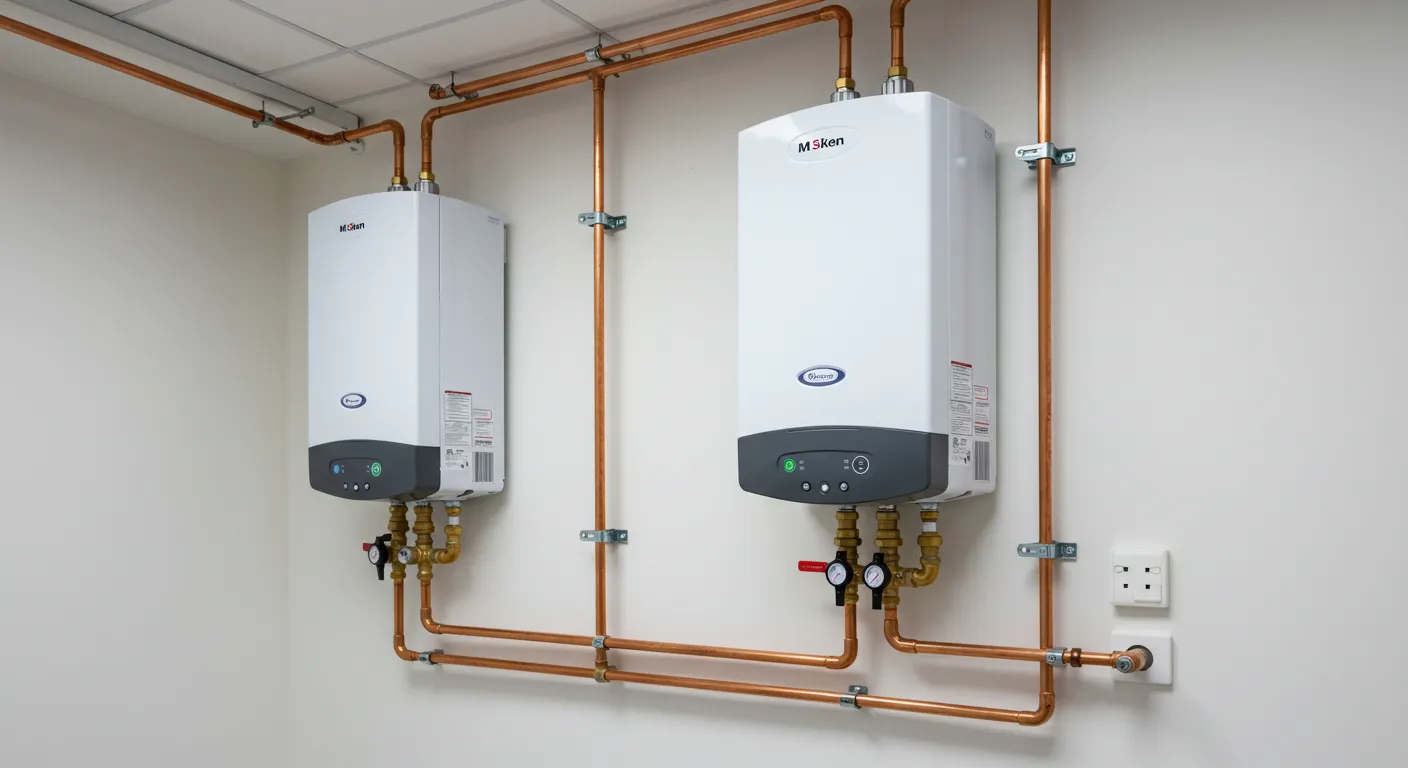
Tankless Water Heater Installation
Installing a tankless water heater is a job best left to professionals. The process is typically more involved than replacing a traditional tank heater. Key considerations include:
- Sizing: Correctly sizing the unit is critical. It depends on the household's peak hot water demand, which is determined by the number of people living in the home and the number of fixtures (showers, sinks, appliances) that might be used simultaneously. An undersized unit won't provide enough hot water, while an oversized one is an unnecessary expense.
- Fuel Type and Venting: Tankless heaters run on either natural gas, propane, or electricity. Gas units require proper venting to expel combustion gases safely, often using specialized stainless steel pipes. Electric units require significant electrical capacity and dedicated circuits. Technicians assess the existing infrastructure to determine the best unit type and ensure proper venting and electrical connections according to local codes in Upland, CA.
- Water Lines and Gas Lines: The installation involves connecting to existing water lines and, for gas units, the gas supply line. This requires precise work to prevent leaks and ensure safe operation.
- Condensate Drain: Many high-efficiency gas tankless units produce condensate, a slightly acidic liquid that needs to be properly drained away. This requires installing a drain line and often a neutralizing filter.
- Location: Tankless units can be installed indoors or outdoors, depending on the model. Indoor installations require appropriate venting. Outdoor installations must be rated for outdoor use and potentially require freeze protection in colder climates, although this is less of a concern in Upland, CA's typical weather.
A professional Water Heater Installation & Replacement ensures that all these factors are correctly addressed, the unit is installed according to manufacturer specifications and local building codes, and the system operates efficiently and safely from day one.
Tankless Water Heater Repair
Even with proper installation and maintenance, tankless water heaters can sometimes encounter issues. Due to their complex nature, diagnosing and repairing a tankless unit requires specific expertise. Common problems include:
- Mineral Buildup: Hard water is a significant issue for tankless heaters. Minerals like calcium and magnesium can accumulate on the heat exchanger, reducing efficiency and potentially causing the unit to overheat or shut down. This is often indicated by reduced hot water flow or unusual noises.
- Ignition Failure: Gas units rely on an ignition system to fire the burner. Issues with the igniter, gas supply, or electronic controls can prevent the unit from heating water.
- Error Codes: Tankless heaters often have diagnostic systems that display error codes when a problem is detected. Understanding these codes requires technical knowledge and access to service manuals.
- Cold Water Sandwiches: This phenomenon occurs when a hot water tap is turned off briefly and then back on. The water sitting in the pipes cools, and the tankless unit takes a moment to reignite, resulting in a slug of cold water before the hot water returns. While not a malfunction, it's a characteristic of the technology and can sometimes be mitigated with system adjustments or buffer tanks.
- Lukewarm Water: This could be caused by improper sizing, mineral buildup, or issues with the flow sensor or heating element (in electric units).
When issues arise, attempting DIY repairs on a tankless water heater can be dangerous and may void warranties. Professional Water Heaters Repair technicians from Power Pro Plumbing Heating & Air have the training, tools, and diagnostic equipment necessary to identify the root cause of the problem and perform the correct repairs, restoring your unit to optimal performance.
Tankless Water Heater Maintenance
Regular maintenance is crucial for ensuring the longevity, efficiency, and reliable operation of a tankless water heater. Manufacturers recommend annual or biennial maintenance, depending on water hardness and usage. A key maintenance task for tankless units, especially in areas with hard water like parts of Southern California, is flushing the system.
The flushing process involves circulating a vinegar or mild descaling solution through the heat exchanger to remove mineral buildup. This helps prevent scaling, which can significantly reduce the unit's efficiency and lifespan. Other maintenance steps include:
- Inspecting the Heat Exchanger: Checking for any signs of corrosion or damage.
- Checking the Venting: Ensuring the vent pipes are clear and properly sealed.
- Testing the Safety Controls: Verifying that pressure relief valves and temperature limits are functioning correctly.
- Inspecting the Burner Assembly (Gas Units): Cleaning or inspecting the burner for optimal combustion.
- Checking Water and Gas Connections: Ensuring there are no leaks.
Participating in a maintenance plan, like the Power Pro Club which includes water heater maintenance, can help ensure your tankless unit receives the regular care it needs. Proactive maintenance helps prevent unexpected breakdowns, maintains energy efficiency, and extends the life of your valuable appliance. Ignoring maintenance, particularly flushing, can lead to costly repairs or premature unit replacement.
In summary, tankless water heater services in Upland, CA encompass expert Water Heater Installation & Replacement, timely and accurate Water Heaters Repair for various issues, and essential ongoing maintenance to protect your investment.

